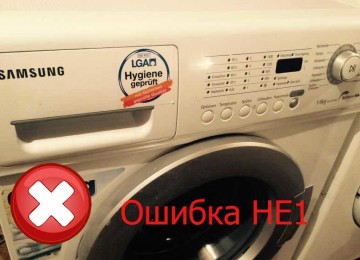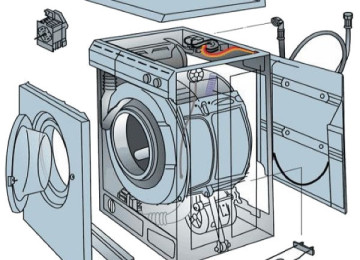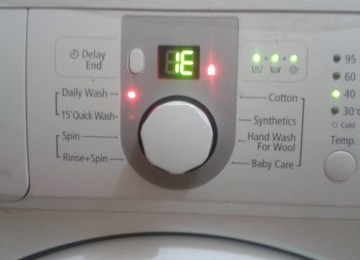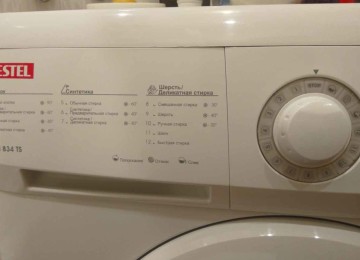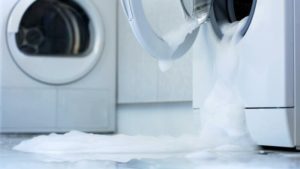 Having habitually started your washing machine, you were distracted by other things, and when you came to check its operation, you found a puddle of water near it? We recommend putting aside all household chores and urgently taking appropriate measures. You should not delay repairs by placing containers under the hatch or spreading rags on the floor, because after a while the situation will worsen and water leakage will intensify. So what to do if your washing machine is leaking from under the door?
Having habitually started your washing machine, you were distracted by other things, and when you came to check its operation, you found a puddle of water near it? We recommend putting aside all household chores and urgently taking appropriate measures. You should not delay repairs by placing containers under the hatch or spreading rags on the floor, because after a while the situation will worsen and water leakage will intensify. So what to do if your washing machine is leaking from under the door?
There is dirt on the door
To eliminate a water leak, it is recommended to understand what contributes to its occurrence. In some cases, the formation of a leak is not caused by a breakdown of the washing machine, but by ordinary contamination of its door.
Limescale accumulates at the bottom of the loading hatch glass. If the layer is small, then it does not affect the normal operation of the washing machine, but most housewives simply do not see it, and after a certain time a lime crust appears on the glass.
The layer of scale gradually thickens, and when its thickness becomes two to three millimeters, the door no longer fits tightly to the body of the machine, and the coating interferes with the normal closing of the hatch.
As a result, due to a loosely closed hatch, water begins to leak from under the door. Fixing this problem is quite simple.You will have to carefully check the surface of the door, find the place where the limescale has accumulated and remove it with a brush with metal bristles. As soon as you remove the main crust, remove the remaining deposits with a simple rag or abrasive sponge. At the end of this procedure, the door will close normally, the washing machine will again operate in normal mode, without water leakage.
Damage to the rubber cuff

But when you are absolutely sure that the water is leaking under the door, it is recommended to check the integrity of the cuff, since the leak may appear due to severe wear of the sealing element. When closed, the washing machine system should be hermetically sealed, but if the cuff is damaged, this condition will not be met.
By the way, the cuff does not necessarily have to have cracks or tears. It can become wavy or too hard, which is also a cause of water leakage.You will have to carefully check the surface of the door, find where the limescale deposits have accumulated and remove it with a brush with metal bristles. As soon as you remove the main crust, remove the remaining plaque with a simple rag or abrasive sponge. At the end of this procedure, the door will close normally, the washing machine will again operate in normal mode, without water leakage.
Damage to the rubber cuff
What else could be the cause of water leakage? This often happens due to a damaged sealing collar located around the loading hole. The seal gradually wears out, cracks, abrasions and holes appear on its surface. Such a sealing cuff ceases to fully fulfill its functional purpose, which is why water begins to leak from the washing machine tank.If water is running down the front of the machine, make sure it is coming from under the door and not from the powder receptacle. Water can ooze from the dispenser tray in small streams, go around the control panel, approach the hatch and create the impression that this is where the leak has appeared.
But when you are absolutely sure that water is leaking under the door, it is recommended to check the integrity of the cuff, since a leak may occur due to severe wear of the sealing element. When closed, the washing machine system should be sealed, but if damage appears on the cuff, this condition will not be met.
By the way, the cuff does not necessarily have to have cracks or tears. It may become wavy or too stiff, which can also cause water leakage.
You can replace the seal yourself
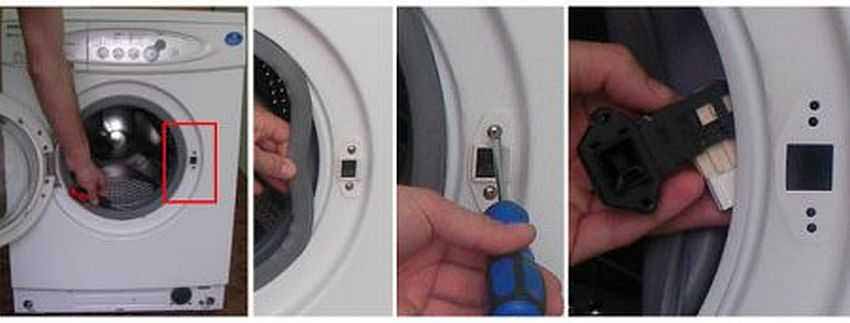
or invite an experienced specialist to do this work.
It is necessary to know that cracks and tears are not necessarily located at the bottom of the sealing rubber. Quite often they are located high up, and leak water during rinsing or spinning. Remember that each case of leakage through the cuff is individual. Broken door hinges or lock Sometimes water flows from the hatch during washing due to improper operation of the washing machine or a defect made during assembly. First of all, the cause of water leakage should be sought in the hinges, which could have become deformed. Simply put, the fastenings of the elements have bent a little, and this malfunction has become the reason for the incomplete closing of the loading hatch door. And we already know that the broken tightness of the hatch and the body part definitely entails the formation of water leakage.
If the problem lies precisely in this, it is quite easy to fix it by
replacing the failed hinges
- with new analogs. The most intelligent owners of washing machines can try to understand where exactly the deformation occurred and try to level the surface without buying new hinges for replacement.You can replace the cuff yourself
- or invite an experienced specialist to do this work.
- Sometimes water leaks are caused by small foreign objects stuck between the rubber seal and the glass of the loading hatch door, preventing a tight connection. If the seal is quite flexible and looks normal, simply clean the rubber itself and all surfaces of the hatch that come into contact with it, removing lint, small particles of fabric, and washing powder residues.
- You need to know that cracks and tears are not necessarily located at the bottom of the sealing rubber. Quite often they are located high and allow water to leak when rinsing or spinning clothes. Remember that each case of cuff leakage is individual. Broken door hinges or lock.
Sometimes water flows from the hatch during washing due to improper operation of the washing machine or defects made during assembly.
First of all, the cause of water leakage should be sought in hinges that could be deformed. Simply put, the fastenings of the elements were slightly bent, and this malfunction caused the loading hatch door to not close completely. And we already know that the broken seal of the hatch and the hull definitely entails the formation of a water leak.
If this is where the problem lies, it is quite simple to fix it,






